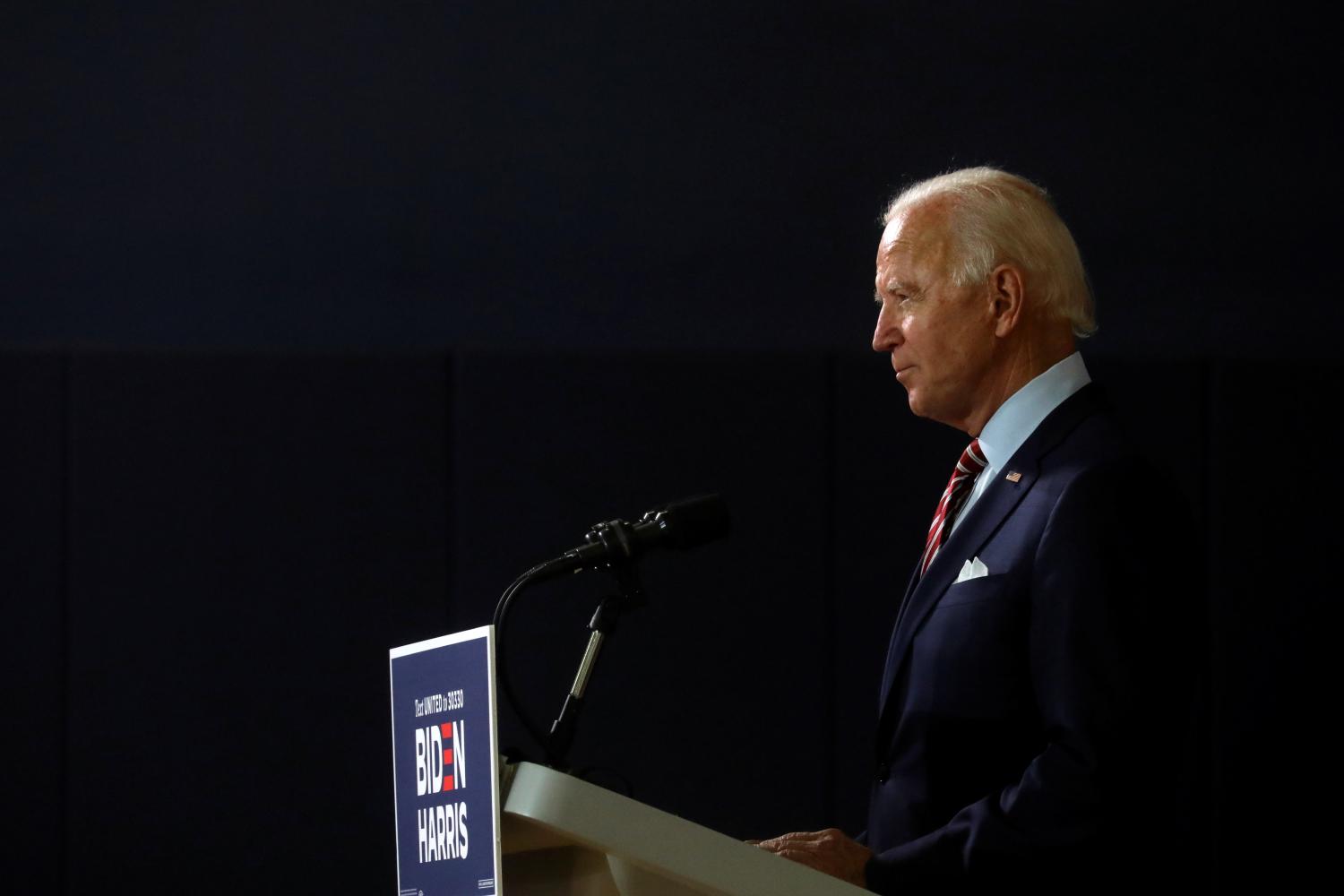Democrats are known for outlining detailed plans to address societal problems—so it’s no surprise that Joe Biden’s campaign has a plan to protect older Americans. Although it primarily covers health care and Social Security issues, it includes a couple features that would directly affect public school teachers. But who would it really affect, and how?
Specifically, the Biden plan would eliminate a rule called the Windfall Elimination Provision (WEP) that applies to teachers and other state and local government workers who do not participate in Social Security. In this piece, I’ll explain how the WEP provision works and show why eliminating it would only serve a small percentage of workers who already qualify for generous, government-provided retirement benefits. If Biden wants to help teachers and other public-sector workers who need it the most—and get rid of the WEP provision in the process—he should support universal Social Security coverage for all workers.
Background on Social Security benefits for state and local government workers
When Congress created Social Security in 1935, it made participation mandatory for most workers employed in the private sector but excluded state and local governments. Later, it let state and local governments choose whether they wanted to participate. Today, about 25% of all state and local government workers—including teachers, firefighters, police officers, and other state employees—are not covered by Social Security. The participation rates vary by role and, nationally, about 40% of teachers lack coverage. Those teachers are concentrated in 15 states—Alaska, California, Colorado, Connecticut, Georgia, Illinois, Kentucky, Louisiana, Maine, Massachusetts, Missouri, Nevada, Ohio, Rhode Island, and Texas—and the District of Columbia, where many or all public school teachers neither pay into nor receive benefits from the system.
For public-sector teachers who are not participating, neither they nor their employers contribute toward the 12.4% payroll tax that all other employees face. In theory, Congress requires state and local governments that are not participating in Social Security to provide their workers with retirement benefits that are at least as generous as Social Security. That rule protects workers who stay in one pension system for their full careers, but it fails to protect short- and medium-term workers who would be better off in Social Security.
Another problem arises when workers change jobs or move across state lines. If employees have what’s called split coverage—meaning they work some years in Social Security and some years outside of it—the Social Security Administration would be led to believe that the worker earned less money over their career than they actually did. When it came time to award their benefits, the Social Security formula would give those workers the same benefit as someone who had no other retirement benefits—effectively giving these workers a second full retirement into which they paid only a small amount.
In the 1980s, Congress decided to end this type of “windfall” by introducing the WEP provision, which reduces the Social Security formula for some workers with split coverage. It was designed to preserve the fairness of the Social Security benefit structure, which awards proportionately larger benefits to lower-income workers. (The WEP applies to individual workers and a similar provision called the Government Pension Offset, or GPO, applies to spouses in households with split coverage. The Biden plan would eliminate both the WEP and GPO.)
The WEP provision is not perfect by any means, but it serves an important purpose, and getting rid of it will not help the neediest Americans. To understand why, it’s helpful to unpack how it works and who actually faces a penalty.
How does the WEP work?
The standard Social Security benefit formula starts with someone’s average monthly earnings over their highest 35 years of work. For people who contribute less than 35 years—either because they weren’t employed or because they weren’t participating in Social Security at the time—the calculation treats those years as zeroes. The formula then replaces 90% of the worker’s average monthly earnings up to a limit known as the first “bend point.” After that point, the replacement rate drops to 32%, and then to 15% after the second bend point. By applying higher replacement rates at the first bend points, the Social Security formula ensures that lower-income workers get a proportionately larger return on their contributions than higher-income workers do.
Without WEP, the Social Security Administration would treat someone with split coverage as someone who was unemployed for those years and treat them as if they had no other retirement savings. Under WEP, however, retirees with split coverage receive a lower replacement rate up to the first bend point. Workers with more years of “substantial earnings,” meaning more time spent contributing into Social Security, receive less of a WEP penalty. At maximum, for someone facing the largest WEP penalty, Social Security reduces the replacement rate up to the first bend point from 90% to 40%. For more detail about how WEP works and the methodology behind the calculation, see this two-page overview from the Social Security Administration.
In practice, few teachers face a WEP penalty
Just because someone has split Social Security coverage, however, does not automatically mean they face a WEP penalty. There are two conditions that limit which workers face a WEP penalty, and how much of a penalty they face.
The first condition is an obvious one: Workers can’t face a WEP penalty unless they qualify for both a pension and a Social Security benefit. Workers would need to meet both eligibility thresholds— at least 5 or 10 years in a state pension plan and at least 10 years of Social Security contributions—before the WEP even comes into play. These eligibility thresholds preclude a lot of teachers from facing a WEP penalty. Across the states that do not offer Social Security coverage to their teachers, more than half of all new teachers won’t stay long enough to qualify for a pension benefit from their state. The WEP cannot apply to them.
The second condition effectively limits the WEP only to people with at least a modest state pension. The rule states that the WEP can never reduce a retiree’s Social Security benefit by more than half of their pension amount. Essentially, this rule means that the WEP does not affect people with only a small pension from their state or local government employer.
To put these rules into context, the table below illustrates which teachers face a WEP penalty based on how they split their careers. For simplicity’s sake, it assumes the teachers have no prior work experience before entering teaching at age 25. The rows represent different amounts of time they might teach in a role without Social Security coverage, and the columns represent years of contributing into Social Security.
In gray are all the cases where a worker would face no WEP penalty. Most of the cells are gray, either because teachers don’t serve long enough to qualify for much of a pension or because they don’t qualify for Social Security. Even teachers who qualify for both a pension and a Social Security benefit may still avoid the WEP, thanks to the rule that WEP can never reduce someone’s Social Security benefit by more than half of their pension.
Table 1: Who faces a Windfall Elimination Program penalty?
| Years contributing to Social Security after teaching | ||||||||||
| — | 0 | 5 | 10 | 15 | 20 | 25 | 30 | 35 | 40 | |
| Years teaching and not contributing to Social Security | 0 | N | N | N | N | N | N | N | N | N |
| 5 | N | N | N | N | N | N | N | N | ||
| 10 | N | N | N | N | N | N | N | |||
| 15 | N | N | N | N | N | N | ||||
| 20 | N | N | Y | Y | Y | |||||
| 25 | N | N | Y | Y | ||||||
| 30 | N | N | Y | |||||||
| 35 | N | N | ||||||||
| 40 | N | |||||||||
| Notes: Gray cells indicate no WEP penalty; blue cells indicate a WEP penalty. This table assumes teachers begin teaching at age 25 without Social Security coverage. After teaching, they continue employment in a role with Social Security coverage. | ||||||||||
The hypothetical above assumes a modest teacher salary and a generic teacher pension benefit. But the results for individual teachers would vary based on their salaries and pension benefits. Teachers and other public employees with higher salaries and more generous pension benefits are more likely to face a WEP penalty.
So who does face a WEP penalty? The retirees who incur a WEP penalty have at least a moderate pension and qualify for a Social Security benefit. When the Social Security Administration ran the numbers recently, they found only about 8% of active retirees with split coverage incur a WEP penalty. To be clear, these retirees aren’t exactly rich—we are still talking about teachers, police officers, and other public employees here—but these are workers who already receive a moderate-to-large pension from their state.
Get rid of the WEP and GPO … by providing Social Security coverage to all workers
The only reason we have the WEP and GPO provisions in the first place is to deal with workers with split coverage. Congress decided it wasn’t fair to treat non-contributing workers with proportionately large pension benefits from other government sources the same as low-income retirees without those pensions to fall back on. Simply eliminating the WEP would mean ignoring the pension advantage those workers enjoy. And remember, we’re only talking about people who aren’t contributing to Social Security for their full careers. Teachers and other workers who already contribute to Social Security for their full careers are eligible to collect their full pension and their full Social Security benefits when they retire.
In fact, that points to a simpler, more equitable reform than merely eliminating the WEP: We should make Social Security coverage mandatory for all. No more split coverage, no more complexity. Universal Social Security coverage would improve the lives of mobile workers who come in and out of teaching or who move across state lines, and it would eliminate the need for the WEP. If Joe Biden wants to improve retirement benefits for teachers and other public servants who need the most help, he should extend Social Security to all public-sector workers.
The Brookings Institution is committed to quality, independence, and impact.
We are supported by a diverse array of funders. In line with our values and policies, each Brookings publication represents the sole views of its author(s).








